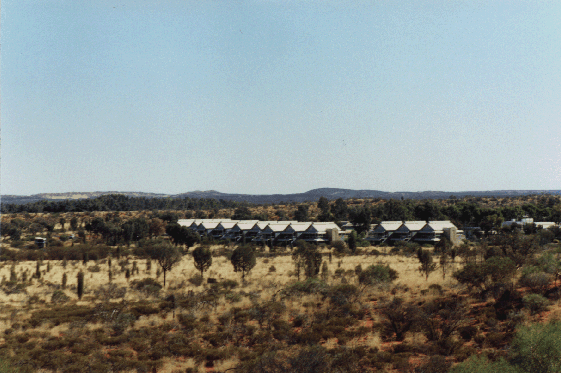
|
The "camp" being the four-star Ayers Rock Resort. Low profile is consistent with the overall profile of the settlement comprising some eight hotels ranging in standard from the five-star Sails in the Desert to a back-packer budget accommodation and even a camping site.
|
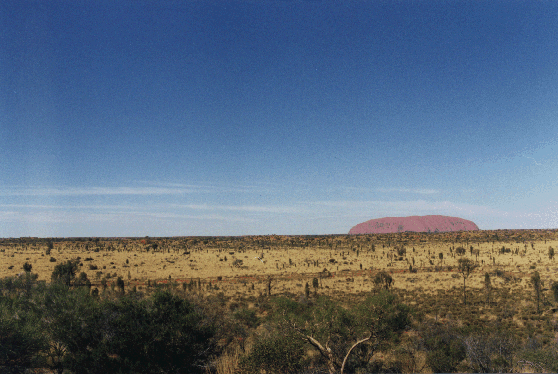
|
Distant Rock - One of the first glimpses of the rock - this one from one of the few look-outs on the tops of dunes around the Ayers Rock resort. The desert uncharacteristically grassy due to recent "good" rains.
|
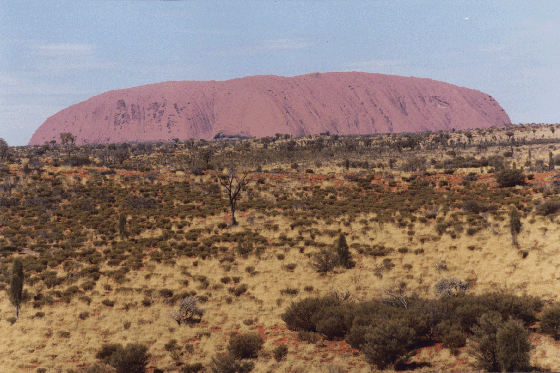
|
Middle distance - A closer shot with a little of the "pock-mark" detail beginning to show. Despite the Spinifex grass covering, the desert still shows some of its rich red sand.
|
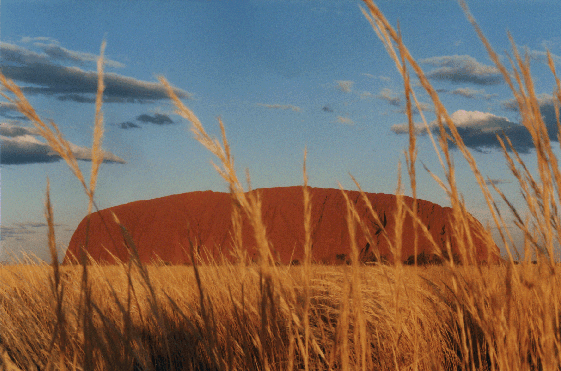
|
Rock in grass - Taken just prior to sunset from the "sunset strip" viewing station. While the grass was initially unexpected, one gets used to it very rapidly so that the more unusual feature of the photograph becomes the cloudy sky.
|

|
It Starts - Taken from the same position as the previous photograph this one shows the start of the sunset in the creeping of the shadow from the bottom of the picture. This is one of my favourite pictures.
|
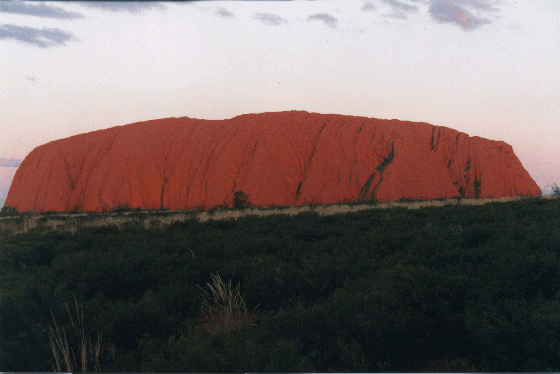
|
Twilight - While the rock did change color during the sunset it was more absorbing to watch rather than to take photographs. I did however make more of an effort for the sunrise as you will see fromthe next two photographs.
|
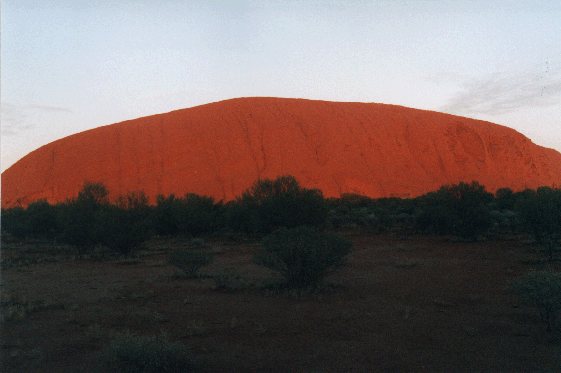
|
Sunrise 1 - Sunrise viewing was of the eastern faces of the rock as one would expect. I believe that the changes in color as the sun rose were more subtle and beautiful than those viewed the night before at sunset.
|

|
Sunrise 2 - No need for commentary, the peace and the beauty said it all....
|
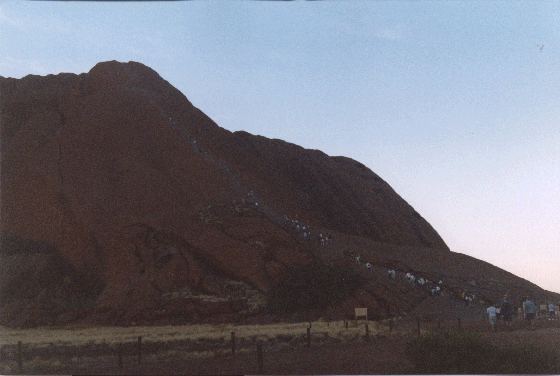
|
Plague of ants - the Anangu refer to the climbing of the rock in a similar manner. tourists are actually asked to respect the sacred nature of the rock and refrain from climbing it but the challenge is still very powerful...
|
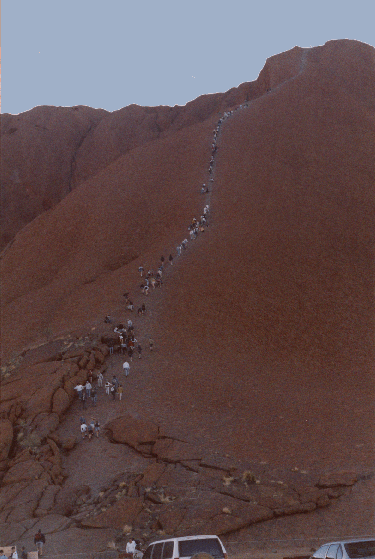
|
The climbing of the rock - In retrospect one does feel like an ant but ants never got so exhausted climbing a 'little hill". The rock itself, the climb, and the view are all worth the trip.
|
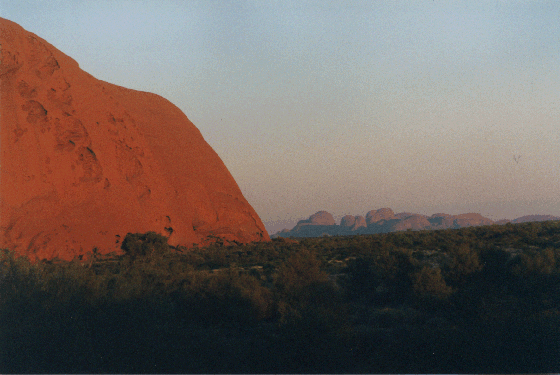
|
Rock & Olga's - One of the sunrise aspects with Kata Tjuta (the Olgas) in the background and deceptively closer than they really are.
|
 to Red Center page...
to Red Center page...
 to Red Center page...
to Red Center page...